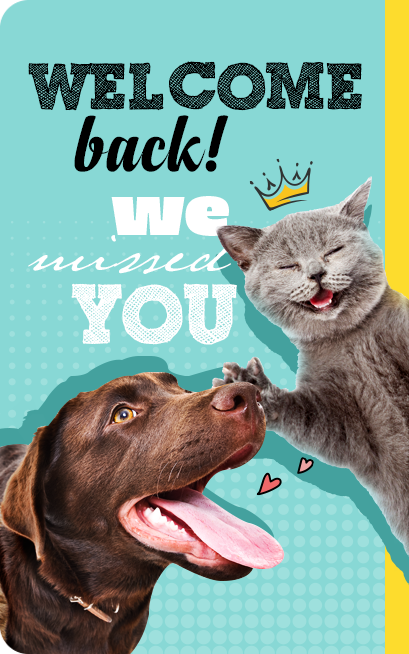Why do old dogs turn grey?
Posted by Muskan bhardwaj on

Introduction
As dogs age, it's common to notice changes in their appearance, including the development of grey fur. While the sight of a beloved pet turning grey can be endearing, many pet owners wonder why this happens. This article delves into the science and reasons behind why old dogs turn grey, examining both genetic and environmental factors.
The Science Behind Greying Fur

Greying of fur in dogs is primarily due to a reduction in melanin production. Melanin is the pigment responsible for the color of hair, skin, and eyes. As dogs age, the cells responsible for producing melanin, called melanocytes, become less active. This decrease in melanin production results in the gradual loss of color in a dog's fur, leading to the appearance of grey or white hair.
Melanin serves several purposes beyond coloration. It protects the skin and hair from the damaging effects of ultraviolet (UV) radiation. Therefore, a reduction in melanin not only changes the appearance of the fur but can also make the hair more susceptible to damage from environmental factors.
Genetic Factors

Genetics play a significant role in determining when and how much a dog's fur will turn grey. Some breeds are predisposed to greying earlier than others. For example, breeds like the Poodle, Schnauzer, and Bearded Collie are known to develop grey fur at a younger age compared to other breeds. This early greying is often due to genetic mutations that affect melanin production.
Certain gene variants are associated with the greying process. For instance, the melanocortin 1 receptor (MC1R) gene and the agouti signaling protein (ASIP) gene are involved in regulating the type and amount of melanin produced. Variations in these genes can lead to differences in coat color and the timing of greying.
Environmental Factors

While genetics play a crucial role, environmental factors also contribute to the greying process. Stress, in particular, has been linked to premature greying in dogs. Chronic stress can lead to the depletion of stem cells responsible for producing melanocytes. This depletion accelerates the greying process.
Other environmental factors such as exposure to pollutants, poor nutrition, and overall health can influence the rate at which a dog's fur turns grey. Dogs that experience high levels of oxidative stress—damage caused by free radicals—may grey more quickly. Antioxidants, which neutralize free radicals, play a role in maintaining the health of cells, including melanocytes. Therefore, a diet rich in antioxidants may help slow down the greying process.
The Role of Age

Age is the most obvious factor in the greying of a dog's fur. As dogs grow older, the natural aging process affects all cells in the body, including melanocytes. The decrease in melanin production is a normal part of aging and is seen in many species, including humans.
Typically, greying starts around the muzzle and face before spreading to other parts of the body. This pattern is similar to how humans often first develop grey hair at the temples. The rate and extent of greying can vary widely between individual dogs, even within the same breed.
Health Implications

While greying itself is not a health concern, it can be indicative of underlying issues. Premature greying in dogs can sometimes be a sign of chronic stress or health problems. Conditions such as hypothyroidism, Cushing's disease, and vitiligo can affect melanin production and lead to changes in fur color.
Pet owners need to monitor their dog's overall health and well-being. Regular veterinary check-ups can help identify any potential health issues early on. If a dog is experiencing premature greying along with other symptoms such as lethargy, weight gain, or changes in appetite, a visit to the vet is warranted.
Managing Greying Fur

While greying is a natural part of aging, there are ways to manage and potentially slow down the process. Ensuring a balanced diet rich in antioxidants can support overall health and potentially reduce oxidative stress. Foods such as blueberries, spinach, and sweet potatoes are excellent sources of antioxidants.
Regular grooming and skin care are also important. Keeping a dog's coat clean and well-maintained can help manage the appearance of grey fur. In some cases, pet owners may choose to use specialized shampoos or conditioners designed to enhance the natural color of the coat.
The Emotional Impact on Pet Owners

Seeing a beloved pet age can be an emotional experience for pet owners. The appearance of grey fur is a visible reminder of the passage of time and the finite nature of life. However, it can also be a testament to the long and cherished bond shared with a pet.
Aging pets often require different levels of care and attention. Understanding the reasons behind changes such as greying fur can help pet owners better support their aging companions. Ensuring a comfortable and happy life for an older dog involves paying attention to their physical and emotional needs.
Celebrating the Golden Years

The greying of a dog's fur is a natural part of the aging process and should be celebrated as a sign of the many years of joy and companionship a pet has provided. Senior dogs have a wealth of experience and wisdom, and their grey fur can be seen as a badge of honor.
As dogs age, their needs may change, but the love and affection they offer remain constant. Providing a nurturing and supportive environment can help ensure that a dog's golden years are filled with happiness and comfort.
Conclusion
The greying of a dog's fur is a complex process influenced by genetic, environmental, and health factors. While it is a natural part of aging, it can also provide insights into a dog's overall well-being. By understanding the reasons behind greying fur, pet owners can better care for their aging companions and ensure they continue to lead healthy, happy lives.
Embracing the changes that come with aging, including the greying of fur, is part of the journey of pet ownership. Each grey hair tells a story of the adventures and moments shared, making the bond between pet and owner even more special.






